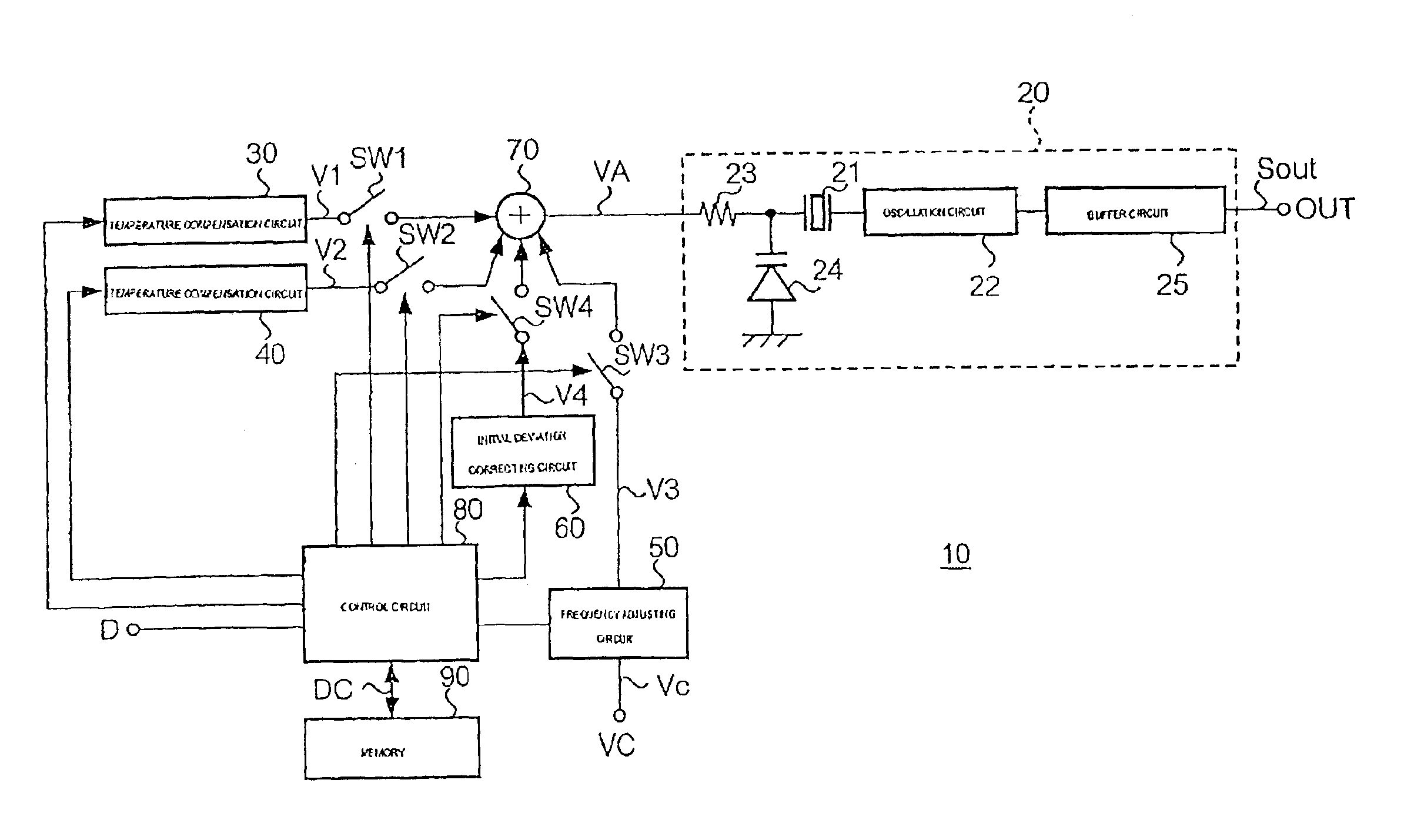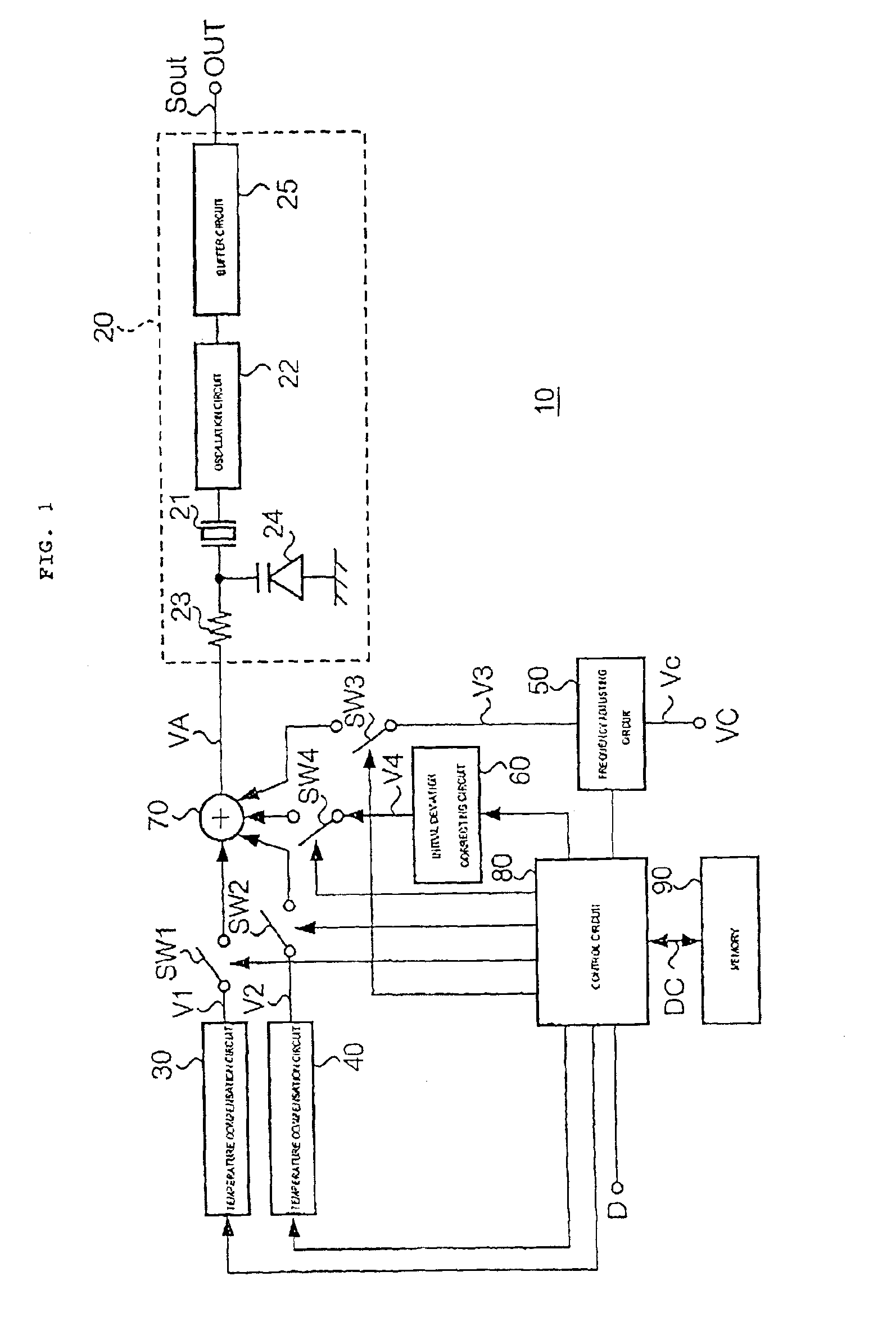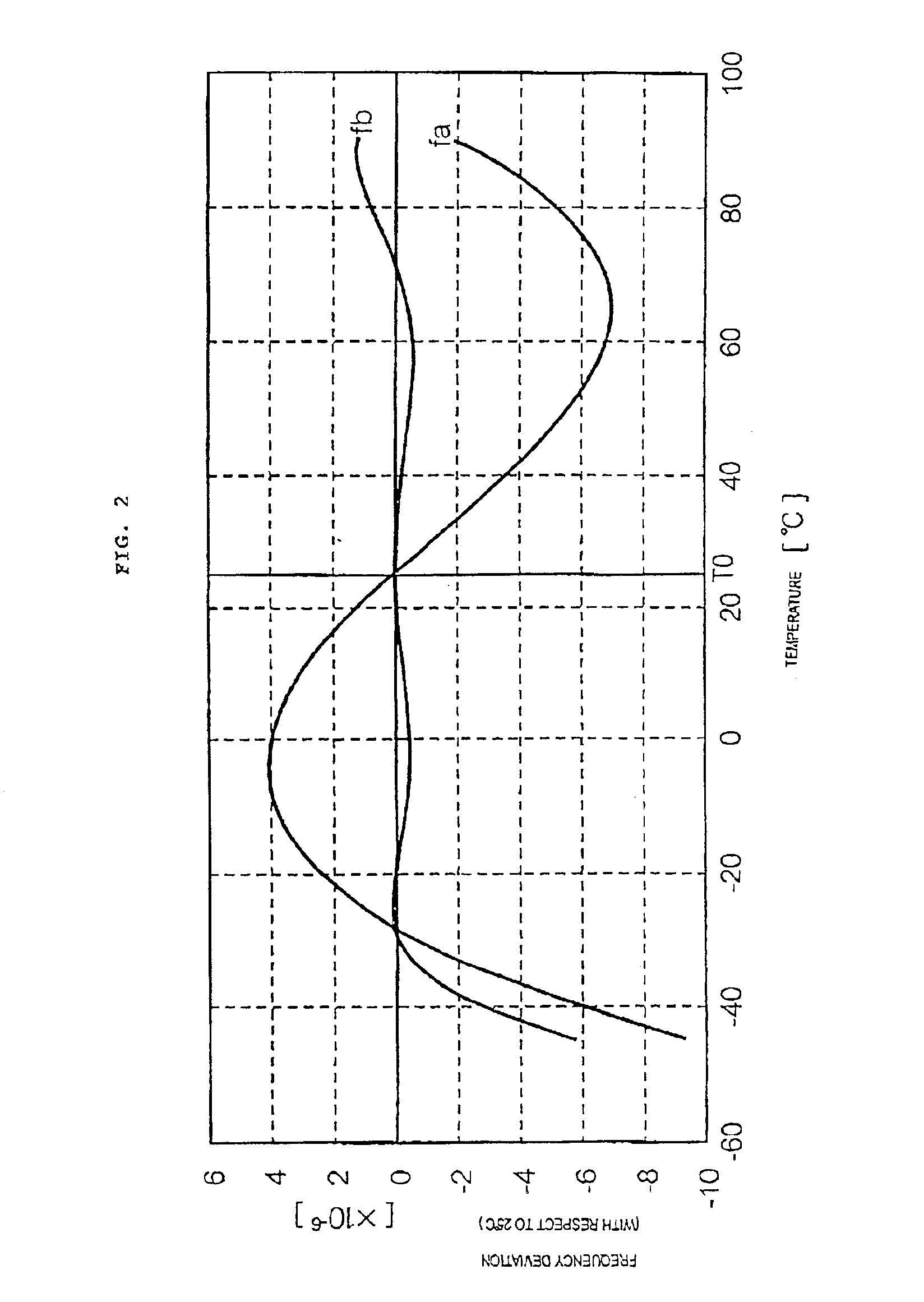Oscillator and communication apparatus
- Summary
- Abstract
- Description
- Claims
- Application Information
AI Technical Summary
Benefits of technology
Problems solved by technology
Method used
Image
Examples
first embodiment
[1] First Embodiment
[1-1] Overall Construction of the First Embodiment
[0051]FIG. 1 is a principle construction diagram of an oscillator according to a first embodiment of the present invention.
[0052]The oscillator 10 includes a voltage-controlled oscillation circuit 20, temperature compensation circuits 30 and 40, a frequency adjusting circuit 50, an initial deviation correcting circuit 60, an addition circuit 70, a control circuit 80, a memory 90, and switches SW1, SW2, SW3, and SW4.
[0053]The voltage-controlled oscillation circuit 20 includes an oscillation circuit 22 for causing oscillation of a piezoelectric vibrator 21 such as a crystal vibrator or a ceramic vibrator; a variable-capacitance diode (hereinafter referred to as a varicap) 24 connected to a midpoint node between an input resistor 23 and the piezoelectric vibrator 21; and a buffer circuit 25. The frequency of an oscillation signal Sout output from an output terminal OUT changes in accordance with the capacitance of th...
second embodiment
[2] Second Embodiment
[0089]An oscillator 10 according to the second embodiment differs from the oscillator 10 according to the first embodiment in that the temperature compensation circuit 30 outputs the temperature compensation voltage V1 only in a temperature range in which the temperature compensation voltage V2 of the temperature compensation circuit 40 does not suffice to keep the oscillation signal Sout within a predetermined range of frequency deviation. More specifically, as shown in FIG. 13, the temperature compensation voltage V1 of the temperature compensation circuit 30 is supplied to the voltage-controlled oscillation circuit 20 via the addition circuit 70 only in temperature ranges of Ta to Tb and Tc to Td in which a frequency-temperature characteristic fc of the oscillation signal Sout that has been temperature-compensated by the temperature compensation circuit 40 is not within an intended range of frequency deviation. Accordingly, a frequency-temperature characteris...
third embodiment
[3] Third Embodiment
[0090]FIG. 14 is a principle construction diagram of an oscillator according to a third embodiment.
[0091]The oscillator 10 according to the third embodiment significantly differs from the oscillators 10 according to the embodiments described above in that an initial deviation correcting circuit 60A is connected to the anode of the varicap 24 of the voltage-controlled oscillation circuit 20 via the switch SW4. In accordance therewith, a midpoint node between the anode of the varicap 24 and the switch SW4 is grounded via a bias resistor Rx.
[0092]FIG. 15 is a circuit diagram showing the initial deviation correcting circuit 60A together with components in the vicinity thereof.
[0093]The initial deviation correcting circuit 60A includes a base capacitor C0 that functions as a fixed-connection capacitor, one end thereof being connected to the switch SW4 and the other end thereof being grounded; L capacitors Cj (j=1 to L) that function as capacitors to be selected for ch...
PUM
 Login to View More
Login to View More Abstract
Description
Claims
Application Information
 Login to View More
Login to View More - R&D
- Intellectual Property
- Life Sciences
- Materials
- Tech Scout
- Unparalleled Data Quality
- Higher Quality Content
- 60% Fewer Hallucinations
Browse by: Latest US Patents, China's latest patents, Technical Efficacy Thesaurus, Application Domain, Technology Topic, Popular Technical Reports.
© 2025 PatSnap. All rights reserved.Legal|Privacy policy|Modern Slavery Act Transparency Statement|Sitemap|About US| Contact US: help@patsnap.com



